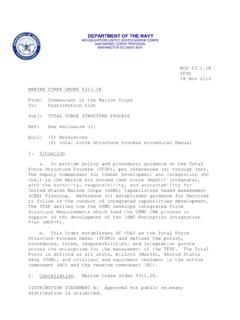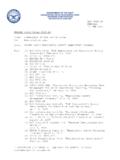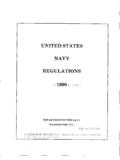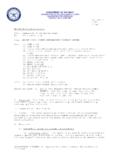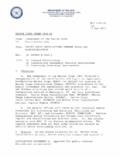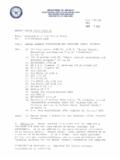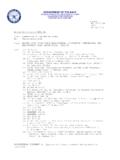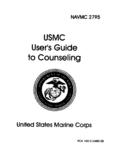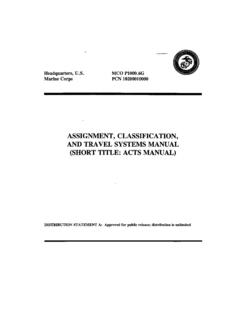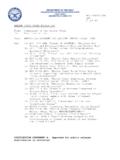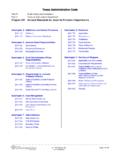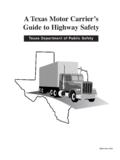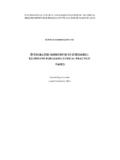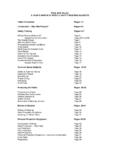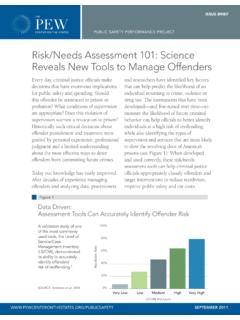Transcription of FM 3-22.91 MORTAR FIRE DIRECTION PROCEDURES
1 FM MORTAR FIRE DIRECTION PROCEDURES July 2008 DISTRIBUTION RESTRICTION: Approved for public release; distribution is unlimited. HEADQUARTERS DEPARTMENT OF THE ARMY This publication is available at Army Knowledge Online ( ) and General Dennis J. Reimer Training and Doctrine Digital Library at ( ). *FM 17 July 2008 FM i Field Manual Headquarters No. Department of the Army Washington, DC, 17 July 2008 MORTAR Fire DIRECTION PROCEDURES Contents Page xix Part One INTRODUCTION AND FUNDAMENTALS OF MORTAR FIRE 1-1 Chapter 1 INTRODUCTION .. 1-1 Organization .. 1-1 General Doctrine ..1-1 Indirect Fire 1-2 MORTAR Missions and Fire DIRECTION Control 1-4 Fire Control Systems .. 1-6 Chapter 2 FUNDAMENTALS OF MORTAR FIRE DIRECTION .. 2-1 Section I. Elements of Firing Data and 2-1 DIRECTION .. 2-1 2-2 Vertical 2-2 Distribution of Bursts.
2 2-2 Interior 2-2 Nature of Propellants and Projectile Movements .. 2-2 Standard Muzzle Velocity .. 2-3 Nonstandard Muzzle 2-3 Exterior 2-4 2-4 Section II. Firing 2-6 2-6 Unit Standard Range ..2-7 Dispersion and 2-9 Mean Point of 2-10 DISTRIBUTION RESTRICTION: Approved for public release; distribution is unlimited. *This publication supersedes FM , 18 January 2005. Contents ii FM 17 July 2008 Probable 2-12 Section III. Fire 2-14 Terminology ..2-14 Target 2-16 Support of Offensive Operations ..2-17 Support of Defensive Fire Support Coordination Company Fire Support 2-20 Battalion Fire Support 2-22 Section IV. Target Analysis and Attack ..2-22 Target 2-22 Registration and Survey Control .. 2-23 Size of Attack Area .. 2-23 Maximum Rate of 2-23 Amount and Type of 2-25 Unit Selection ..2-26 Typical Targets and Methods of Attack.
3 2-27 Part Two FIRE DIRECTION CENTER .. 3-1 Chapter 3 3-1 Principles of Fire DIRECTION .. 3-1 3-1 Personnel 3-2 Chapter 4 MAJOR CONCERNS OF THE FIRE DIRECTION 4-1 Types of Sheaves ..4-1 Computer s Record .. 4-3 DA Form 2188-R (Data Sheet) .. 4-9 DA Form 2188-1-R (LHMBC/MFCS Data Sheet) ..4-14 Angle 4-17 Firing Tables ..4-19 DA Form 3675-R (Ballistic Message) ..4-22 Computer Meteorological Message ..4-36 6400-Mil Meteorological Message ..4-37 Computation of Meteorological Corrections for Large Sector 4-37 Meteorological 4-40 Chapter 5 CALL FOR 5-1 Introduction .. 5-1 Observer Identification .. 5-1 Warning Order ..5-1 Methods of Target Location .. 5-2 Contents 17 July 2008 FM iii Target 5-3 Method of 5-3 Methods of Fire and Control .. 5-4 Message To 5-6 Call For Fire Format .. 5-7 Authentication ..5-8 Part Three MORTAR BALLISTIC COMPUTER.
4 6-1 Chapter 6 INTRODUCTION .. 6-1 6-1 Audio Alarm .. 6-11 Capabilities .. 6-12 Memory Storage 6-13 Chapter 7 PREPARATION OF FIRE CONTROL 7-1 Types of Data 7-2 Initialization .. 7-5 Chapter 8 TYPES OF MISSIONS .. 8-1 Grid Mission Switch .. 8-1 Shift Mission 8-5 Polar Mission Switch .. 8-8 Technical Fire 8-11 8-12 Traversing Fire ..8-13 Searching Fire ..8-20 Illumination .. 8-21 Coordinated 8-23 Chapter 9 SPECIAL PROCEDURES .. 9-1 Registration and Sheaf 9-1 Mean Point of Impact Registration .. 9-4 Radar 9-6 Final Protective 9-8 Immediate Smoke or Immediate Suppression ..9-12 Quick Smoke .. 9-13 Special Keys and 9-19 Chapter 10 DIGITAL DEVICE SUPPORT .. 10-1 Application .. 10-1 Contents iv FM 17 July 2008 Part Four M16 AND M19 PLOTTING 11-1 Chapter 11 11-1 11-1 M16 Plotting Board .. 11-2 M19 Plotting Board .. 11-4 Chapter 12 PREPARATION OF FIRE CONTROL EQUIPMENT.
5 12-1 Observed Firing 12-1 Modified-Observed Firing 12-13 Transfer of 12-19 Deflection Conversion 12-22 Grid Mission ..12-23 Shift from a Known Point Mission ..12-23 Polar Plot 12-24 Chapter 13 TYPES OF 13-1 Traversing Fire ..13-1 Searching Illumination ..13-12 Chapter 14 SPECIAL 14-1 Registration and Sheaf Adjustment ..14-1 Mean Point of Impact Vertical Interval Correction Factors ..14-17 Radar 14-19 Final Protective 14-21 Part Five MORTAR FIRE CONTROL SYSTEM ..15-1 Chapter 15 15-1 Section I. Initialization and Configuration .. 15-1 Description .. 15-1 15-8 Soldier Graphic User Interface .. 15-9 Data Initialization and System 15-13 Section II. Additional Functions ..15-26 Ammunition/Status Function ..15-27 Meteorological Data Target/Known Point 15-36 Safety Fan 15-39 Check Plain Text 15-41 Alerts Function ..15-44 Contents 17 July 2008 FM v Chapter 16 FIRE MISSIONS.
6 16-1 Section I. Parts of a Standard Fire 16-1 Standard Fire Mission PROCEDURES .. 16-1 Sequence of Actions from the Initial Call For Fire to the End of Mission .. 16-1 Digital and Manual Fire Mission Tabs and 16-2 Common Actions ..16-4 Section II. Basic Fire Missions .. 16-5 Basic Digital 16-5 Manual 16-16 Section III. Special 16-19 Registration Point .. 16-20 Target/Known Point .. 16-22 Illumination 16-24 Coordinated Illumination Mission ..16-30 Final Protective 16-32 Smoke Missions .. 16-43 Part Six LIGHTWEIGHT HANDHELD MORTAR BALLISTIC 17-1 Chapter 17 INTRODUCTION .. 17-1 Section I. Initialization and Configuration .. 17-1 17-1 Capabilities .. 17-3 Battery Life .. 17-4 Graphic User 17-4 Startup .. 17-8 Data Initialization and 17-9 Meteorological 17-17 Safety Fan .. 17-20 Check Fire ..17-22 Section II. 17-23 Cable Connection.
7 17-23 Parameter Setup .. 17-24 Set Up a Unit 17-26 Edit a Unit 17-26 Enable or Disable a 17-27 Send Status 17-28 Plain Text 17-28 Section III. Global Positioning System .. 17-29 Setup and 17-29 Standby Mode ..17-31 Global Positioning System COMSEC Key .. 17-31 Zeroizing the Global Positioning System Crypto 17-31 Contents vi FM 17 July 2008 Chapter 18 FIRE MISSIONS .. 18-1 Section I. Manual Fire 18-1 Grid Missions ..18-2 Shift From a Known Point Missions ..18-12 Polar Plot 18-13 Laser Polar Plot 18-14 Quick Fire 18-15 Direct Lay 18-16 Hipshoot Missions ..18-17 Targets/Known Points .. 18-21 Section II. Digital Fire Missions ..18-21 Receipt of the 18-22 Section III. Special 18-33 Registration 18-34 Illumination 18-39 Coordinated Illumination Missions ..18-46 Final Protective 18-49 Smoke Missions .. 18-61 Search and Traverse Missions.
8 18-74 Appendix A MORTAR TRAINING STRATEGY ..A-1 A-1 Training Evaluation .. A-1 Appendix B ICONS FOR THE MORTAR FIRE CONTROL SYSTEM ..B-1 Appendix C SAFETY PROCEDURES ..C-1 Surface Danger Safety Appendix D FIELD-EXPEDIENT SURVEY TECHNIQUES ..D-1 Graphic Resection ..D-1 Hasty Appendix E FIRE DIRECTION CENTER CERTIFICATION .. E-1 Section I. Conduct of the E-1 Eligible E-1 Qualification .. E-1 General Rules .. E-2 Section II. Certification .. E-2 M16/M19 Plotting Board Certification .. E-2 MORTAR Fire Control System E-3 Lightweight Handheld MORTAR Ballistic Computer Certification .. E-4 MORTAR Ballistic Computer Certification .. E-5 Contents 17 July 2008 FM vii Section III. MORTAR Ballistic Computer Example Test ..E-5 Situation Situation Situation C .. E-11 Situation D .. E-13 Situation E .. E-19 Situation F .. E-21 Situation G .. E-23 Situation H.
9 E-27 Situation E-31 Situation J .. E-32 Situation K .. E-34 Situation E-37 Situation E-39 Situation N .. E-41 Situation O .. E-44 Section IV. Plotting Board Test .. E-46 Situation A .. E-46 Situation B .. E-47 Situation C .. E-54 Appendix F ERROR MESSAGES ..F-1 Characters ..F-1 Messages, Explanations, and Actions ..F-1 Glossary .. Glossary-1 References .. References-1 Index .. Index-1 Figures Figure 1-1. Indirect fire team..1-2 Figure 2-1. DIRECTION to the 2-1 Figure 2-2. Elements of the trajectory.. 2-5 Figure 2-3. Example of Firing Table 2-6 Figure 2-4. Mean point of 2-10 Figure 2-5. Burst in elliptical 2-10 Figure 2-6. A 100-percent 2-11 Figure 2-7. Dispersion rectangle.. 2-11 Figure 2-8. One probable 2-12 Figure 2-9. Range probability curve.. 2-12 Figure 2-10. Probable error in Figure 2-11. Group of targets.. 2-15 Figure 2-12.
10 Series of targets.. 2-15 Contents viii FM 17 July 2008 Figure 2-13. Final protective fires 2-16 Figure 4-1. Example of completed DA Form 2399-R (Computer s Record).. 4-3 Figure 4-2. Example of completed DA Form 2188-R (Data Sheet).. 4-9 Figure 4-3. Example of completed DA Form 2188-1-R (LHMBC/MFCS Data Sheet).. 4-14 Figure 4-4. Angle T between 400 and 1600 mils.. 4-17 Figure 4-5. Angle T exceeding 499 mils..4-18 Figure 4-6. Sample pages from firing tables for 60-mm 4-20 Figure 4-7. Sample pages from firing tables for 81-mm 4-21 Figure 4-8. Sample pages from firing tables for the 120-mm 4-22 Figure 4-9. Six-character groups.. 4-23 Figure 4-10. Example of completed DA Form 3675-R (Ballistic Message).. 4-24 Figure 4-11. Example of completed DA Form 3675-R (Ballistic Message).. 4-25 Figure 4-12. Line number and zone height relative to meteorological data plane.
